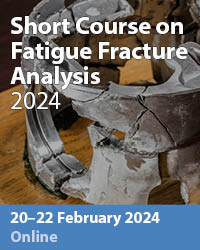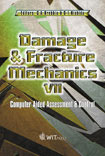An Experimental Study On Fatigue Crack Growth In Lap Joints With Multiple Fastener Holes
Price
Free (open access)
Transaction
Volume
37
Pages
Published
2002
Size
804 kb
Paper DOI
10.2495/DM020221
Copyright
WIT Press
Author(s)
T Sasaki & T Honda
Abstract
An experimental study on fatigue crack growth in lap joints with multiple fastener holes T. Sasaki & T. Honda National Institute of Industrial Safety, Japan. Abstract Although a lot of studies have been conducted on the multi-site damage (MSD) problems, most of them focus on the strength of plates with MSD and the phenomenon of MSD seems to be not fully clarified yet. In this study, fatigue crack growth tests were conducted using bolted lap joint specimens with multiple fastener holes in order to investigate the phenomenon of MSD. Crack growth data were generated using notched and unnotched specimens at different clamping force levels. The results of fatigue tests revealed that the existence of initial notches at fastener holes was an important factor for the occurrence of MSD in this type of specimen. Furthermore, the stress distribution of the lap joint specimen was analyzed by an infrared stress imaging system to understand the nature of fatigue crack initiation and fatigue crack growth. Good agreement was obtained between the crack initiation sites and the highest stress regions in the unnotched specimen. 1 Introduction Since the 1985 Japan Airlines Boeing 747 crash and the 1988 Aloha Airlines Boeing 737 incident, the phenomenon of multi-site damage (MSD) in fuselage lap joints has received a great deal of attention [l-8]. MSD is defined as growth of multiple cracks emanating from fastener holes. After some period of slow crack growth, MSD cracks may suddenly link up to form a, large crack that may cause catastrophic failure. In this study, to prevent failure of lap joints with multiple fastener holes caused by MSD, fatigue crack growth in lap joints was investigated through fatigue tests using lap joint specimens fastened with two rows of bolts. Not rivets but bolts were used as fasteners to control the clamping force. Two types of specimen, with and without initial notches at fastener holes,
Keywords





